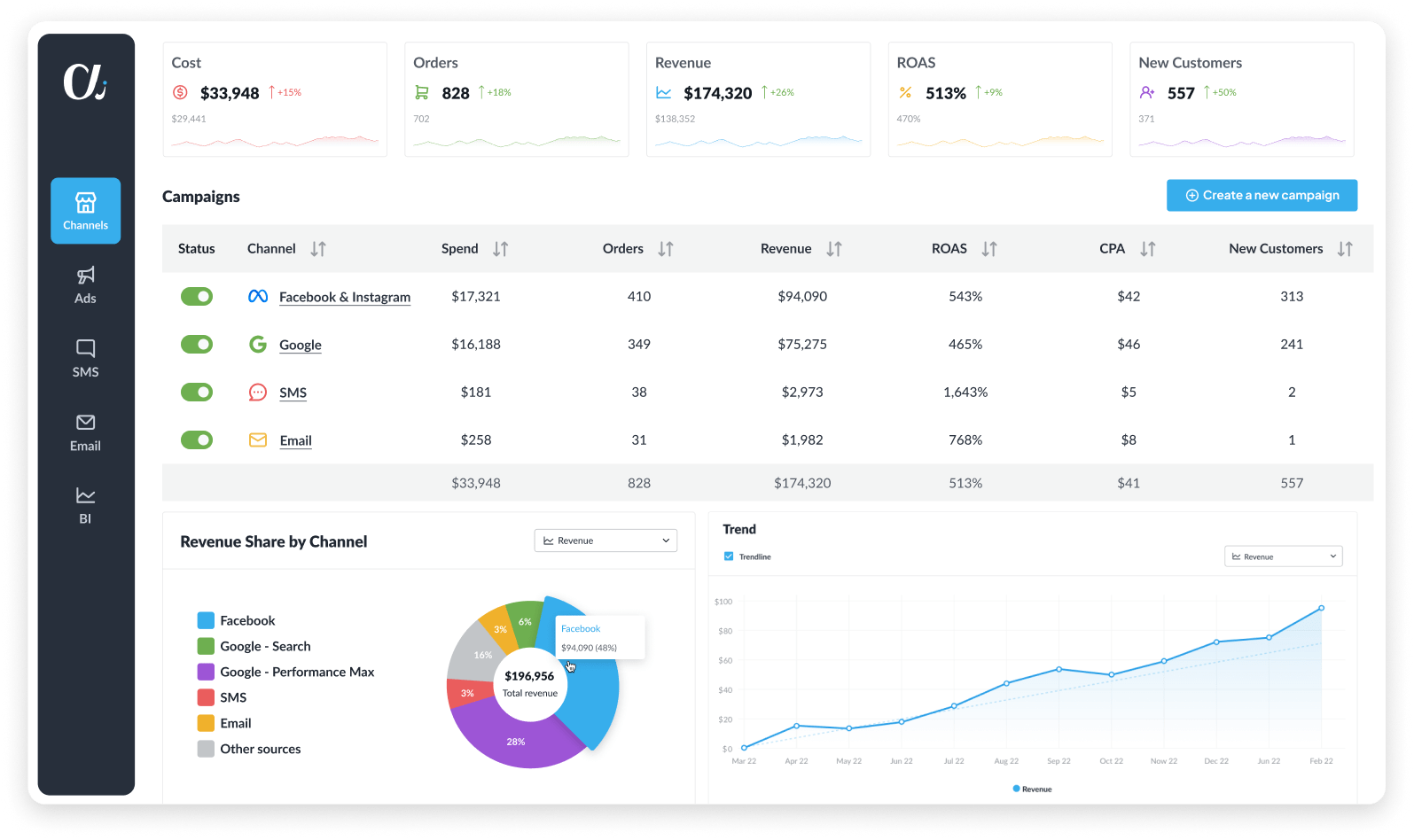AdScale AI: Complete Buyer's Guide
AI-powered advertising optimization for ecommerce
AdScale AI is an AI-powered advertising optimization platform specifically engineered for ecommerce businesses seeking to maximize performance across Google Ads and Facebook campaigns through proprietary data intelligence.
Market Position & Maturity
Market Standing
AdScale AI occupies a strategic middle-market position within the ecommerce advertising optimization landscape, positioned between Google's native automation tools and enterprise-level platforms like Smarter Ecommerce[131][135].
Company Maturity
Company maturity indicators include established customer success patterns with documented case studies demonstrating significant performance improvements[140][141].
Growth Trajectory
Growth trajectory indicators include expanding feature sets with generative AI capabilities and automated video ad generation, suggesting continued product development investment[138].
Strategic Partnerships
Strategic partnerships with Shopify and BigCommerce platforms provide ecosystem positioning that enhances market credibility and reduces customer acquisition friction[133][136].
Longevity Assessment
Operational scale evidence includes integrated SMS and email marketing capabilities with credit-based pricing systems, indicating mature product development and established operational infrastructure[139].
Proof of Capabilities
Customer Evidence
Ed Hardy North America represents AdScale AI's most compelling customer success validation, achieving 11× revenue growth within seven months of implementation while maintaining 1,200% ROAS despite significant budget scaling[140][141].
Quantified Outcomes
Quantified performance outcomes extend beyond the Ed Hardy case study to include customer reports of improved ad management efficiency through AI automation[144].
Case Study Analysis
The Ed Hardy North America case study demonstrates the platform's capacity to deliver transformational results through AI-driven audience segmentation and product optimization, with the additional benefit of 70% shorter repurchase cycles indicating improved customer lifetime value optimization[140][141].
Market Validation
Market validation indicators include successful integrations with major ecommerce platforms (Shopify and BigCommerce) and established customer base across fashion and apparel retailers[131][133][136].
Competitive Wins
The platform's proprietary data access capabilities provide documented advantages over Google and Facebook's native optimization tools[131][135].
Reference Customers
Reference customer diversity includes fashion retailers like Ed Hardy and general Shopify merchants, though the available evidence suggests strongest performance validation within the fashion and apparel vertical[140][141][136].
AI Technology
AdScale AI's technical foundation centers on proprietary data signal analysis that provides targeting and optimization capabilities unavailable through Google and Facebook's native advertising tools[131][135].
Architecture
The platform's core AI architecture leverages machine learning algorithms that process ecommerce-specific data points including purchase history, browsing behavior, product performance metrics, and customer lifecycle patterns[131][132].
Primary Competitors
Primary competitive landscape positions AdScale AI against Google's native Performance Max campaigns, Facebook's automated bidding tools, and specialized ecommerce advertising agencies[131][135].
Competitive Advantages
Core competitive advantages center on proprietary data access that provides targeting capabilities unavailable through Google and Facebook's native tools[131][135].
Market Positioning
AdScale AI occupies a middle-market position between basic platform automation and enterprise-level solutions like Smarter Ecommerce's AdEngine.
Win/Loss Scenarios
Win/loss scenario analysis suggests AdScale AI wins against native platform tools when businesses require cross-channel optimization and creative automation, but may lose to specialized solutions when enterprises need advanced customization or complex integration requirements[131][135][143].
Key Features

Pros & Cons
Use Cases
Integrations
Pricing
Featured In Articles
Comprehensive analysis of Google Ads for Ecommerce for Ecommerce businesses and online retailers. Expert evaluation of features, pricing, and implementation.
How We Researched This Guide
About This Guide: This comprehensive analysis is based on extensive competitive intelligence and real-world implementation data from leading AI vendors. StayModern updates this guide quarterly to reflect market developments and vendor performance changes.
146+ verified sources per analysis including official documentation, customer reviews, analyst reports, and industry publications.
- • Vendor documentation & whitepapers
- • Customer testimonials & case studies
- • Third-party analyst assessments
- • Industry benchmarking reports
Standardized assessment framework across 8 key dimensions for objective comparison.
- • Technology capabilities & architecture
- • Market position & customer evidence
- • Implementation experience & support
- • Pricing value & competitive position
Research is refreshed every 90 days to capture market changes and new vendor capabilities.
- • New product releases & features
- • Market positioning changes
- • Customer feedback integration
- • Competitive landscape shifts
Every claim is source-linked with direct citations to original materials for verification.
- • Clickable citation links
- • Original source attribution
- • Date stamps for currency
- • Quality score validation
Analysis follows systematic research protocols with consistent evaluation frameworks.
- • Standardized assessment criteria
- • Multi-source verification process
- • Consistent evaluation methodology
- • Quality assurance protocols
Buyer-focused analysis with transparent methodology and factual accuracy commitment.
- • Objective comparative analysis
- • Transparent research methodology
- • Factual accuracy commitment
- • Continuous quality improvement
Quality Commitment: If you find any inaccuracies in our analysis on this page, please contact us at research@staymodern.ai. We're committed to maintaining the highest standards of research integrity and will investigate and correct any issues promptly.